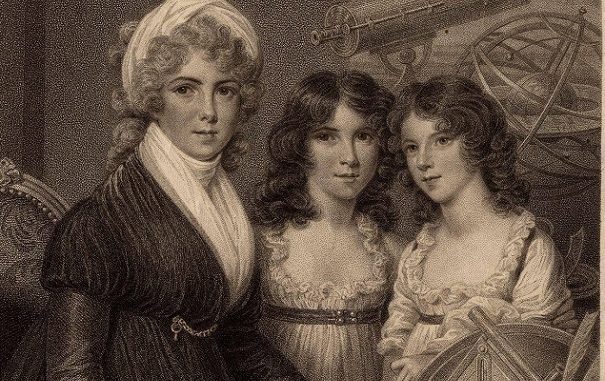
By Dan Thompson
187 years to the week since Margaret Bryan died, a woman who works for the UK Space Agency has revealed her research into the life of this Georgian lady who taught astronomy to girls from her Margate schoolhouse.
Margaret Bryan was an early advocate of teaching maths, physics, and astronomy to girls. She initially worked from Bryan House, a schoolhouse on the site of Margate Caves, before moving her school to Blackheath. She also published a series of books ‘by subscription’ – the precursor to today’s crowdfunding.
Inspired by a chance visit to Margate Caves in 2019, Blackheath resident Nikki Lee has trawled through Georgian archives, old newspapers, and census returns in a quest to reveal more about her life.
And she recently discovered that Bryan died on 30th March 1836, and is buried at St Luke’s Church in Chelsea.
The Bryan connection was first discovered by Margate Caves researcher Chris Pearson, who died in 2021. He shared his initial discovery of her connection to the Caves with writer and history tour guide Dan Thompson, who discovered more about her life. Lee has taken their work even further.
“The details of Margaret Bryan’s life have remained a mystery for over two centuries. Using long-buried archive material from across the globe and clues taken from the lists of subscribers mentioned in her books, I’ve been able to uncover the triumphs and tragedies of Margaret’s story,” Lee says, “shining a light on the remarkable contribution she made to the field of scientific study and female education, and placing her firmly where she belongs amongst the ranks of celebrated women in science.”
In 1797, while living in Margate, Bryan published a Compendious System of Astronomy. Bryan was one of the first to teach mathematics and science to girls, and her books continued this work. They earned her a degree of fame, and she moved to Blackheath, publishing Lectures on Natural Philosophy (thirteen lectures on hydrostatics, optics, pneumatics, and acoustics) in 1806 and in 1815, an Astronomical and Geographical Class Book for Schools.
Lee works for the spaceflight programme at the UK Space Agency. In January, she took a portrait of Bryan to witness the first ever orbital launch attempt from UK soil at Spaceport Cornwall, an event which demonstrated the UK’s launch capability.
Lee lives in Blackheath, close to the site of Bryan’s former home. She plans to publish her findings about Bryan, and to use the story to inspire a new generation of young women to study science.
While Bryan trod a brave path in her day, even today there is a science gender gap. Less than 30% of the world’s researchers are women. In schools, boys are still more likely to choose science subjects and to move on to studying science degrees at university.

